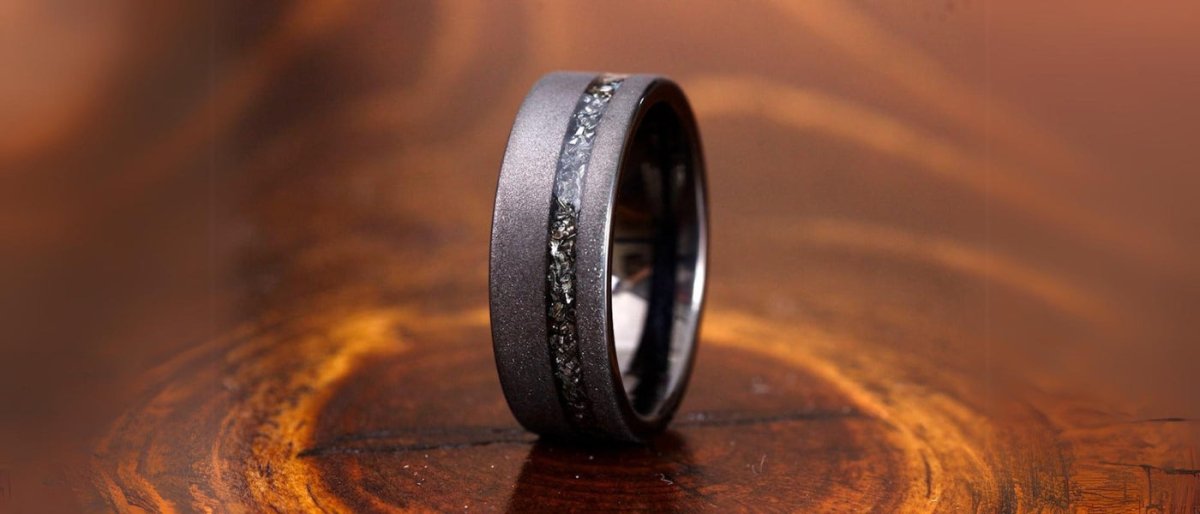Have you ever found yourself with a ring stuck on your finger? It can be frustrating and even scary. Whether it's a beloved family heirloom or a new purchase, getting a ring off can be more challenging than it seems.
Addressing this issue quickly and safely is crucial. A stuck ring can lead to discomfort or, in extreme cases, even damage to your finger. In this blog, we'll explore several effective techniques to help you get that ring off without any harm. From simple home remedies to more advanced methods, we've got you covered. Let's find the best solution for your situation.
Common Causes of a Stuck Ring
Several factors can cause a ring to become stuck on your finger. Understanding these common causes can help you find the right solution:
-
Swelling: Sometimes, your finger might swell due to heat, allergies, or certain medical conditions. This swelling can make your ring feel too tight and difficult to remove.
-
Weight Changes: Gaining weight or experiencing changes in your body size can affect how your ring fits. If your fingers become more extensive, the ring might get stuck.
-
Ring Size Issues: If your ring is too small or needs to be fit properly, it can become stuck. An incorrect size can make it hard to slide off.
- Temporary Issues: Injuries or fluid retention (like when you're retaining water) can cause your fingers to swell temporarily, making it challenging to remove your ring.
Identifying the cause of your stuck ring can help you choose the best method for safely and effectively removing it.
Simple Techniques to Remove a Stuck Ring
Soap and Water Method
One of the easiest and most common methods to remove a stuck ring is using soap and water. This technique works by making your finger slippery, which can help the ring slide off more easily.

Soap and water can reduce friction and help ease the ring off your finger. The soap lubricates your skin, and the water can help reduce any swelling.
Step-by-Step Guide
-
Wash Your Hands: First, wash your hands with warm water and mild soap to remove dirt and oils.
-
Apply Soap: Generously apply soap (like dish soap or hand soap) around the ring and your finger. Make sure to cover the entire area.
-
Add Water: Run some warm water over your finger to further help the soap slide.
-
Gently Twist: Slowly twist and wiggle the ring while pulling it off. Be patient and avoid pulling too hard to prevent injury.
- Repeat if Needed: If the ring still doesn't come off, reapply soap and water and try again.
When to Use This Technique
Use this method when your finger isn't swollen too much and no severe injuries or conditions are affecting the area. It's an excellent first step to try if you're dealing with a stuck ring due to a slight size issue or temporary swelling.
Lubrication Techniques
Lubrication can be a helpful method for removing a stuck ring. Common household items can make your finger slippery and help you remove the ring.
Using Common Household Items: You can lubricate your finger and the ring with petroleum jelly, olive oil, or baby oil. These substances create a slippery surface that can help the ring slide off more easily.
Step-by-Step Guide
Pick one of the following household items:
- Petroleum Jelly: Known for its thick and slippery consistency.
- Olive Oil: An everyday kitchen staple with a smooth texture.
- Baby Oil: Mild and effective for lubrication.
Apply the Lubricant
-
Petroleum Jelly: Dab a generous amount around the ring and your finger.
-
Olive Oil/Baby Oil: Pour a few drops onto the ring and your finger.
-
Massage and Twist: Gently massage the lubricant around the ring and finger. This helps the lubricant seep into any small spaces and reduces friction.
- To try to Remove the Ring, slowly twist and pull the ring off your finger. Be gentle to avoid hurting yourself.
- Wipe Off Excess: Once the ring is off, clean your finger and ring with warm, soapy water to remove any leftover lubricant.
Tips for Applying and Removing the Ring
-
Be Patient: Take your time to avoid injury. Don't rush the process.
-
Reapply if Needed: If the ring still doesn't budge, reapply more lubricant and try again.
- Check for Allergies: Make sure you're not allergic to the lubricant you choose to avoid any skin reactions.
Lubrication techniques can be very effective, especially for rings that are stuck due to a tight fit or minor swelling.
Cold Water and Ice Method
Using cold temperatures can sometimes help remove a stuck ring. Cold water and ice can reduce swelling and make your finger smaller, which may make it easier to slide the ring off.

How Cold Temperatures Can Help: Cold temperatures can cause your finger to shrink slightly due to reduced blood flow and swelling. This can create just enough space for the ring to come off.
Step-by-Step Guide
-
Prepare Ice and Cold Water: Fill a bowl with ice and cold water. Make sure it's cold enough to feel chilly but not so cold that it's uncomfortable.
-
Soak Your Finger: Submerge your finger in cold water for 5-10 minutes. This will help reduce any swelling.
-
Apply Ice (Optional): If your finger is still swollen, you can wrap some ice in a cloth and gently apply it to your finger for a few more minutes.
-
Gently Twist and Pull: After soaking, try gently twisting and pulling the ring. The reduced swelling should make it easier to slide off.
- Dry Your Finger: Once the ring is removed, dry your finger and check for any residual coldness or discomfort.
Precautions to Take
-
Avoid Extreme Cold: Don't use ice directly on your skin or apply extreme cold, as it can cause frostbite or damage.
-
Monitor Time: Limit the time you spend with ice or cold water to avoid discomfort or damage to your skin.
-
Check for Circulation: If you experience numbness or unusual pain, stop immediately and consult a professional if necessary.
The cold water and ice method can be helpful, especially if the issue is temporary swelling.
Dental Floss Technique
The dental floss technique involves using dental floss to create Leverage and remove a stuck ring. This method works by wrapping the floss around your finger to make the ring easier to slide off.
Using Dental Floss to Create Leverage: Dental Floss is thin and strong, making it an effective tool for manoeuvring a stuck ring. By wrapping the floss around your finger and pushing the ring, you can create enough Leverage to remove it.
Step-by-Step Guide
-
Get Dental Floss: Choose a sturdy, not too thin, piece of dental floss. Avoid using String or thread, as they may break or be less effective.
-
Wrap the Floss: Start at the base of your finger (near the palm) and gently wrap the floss around your finger, moving towards the tip. Wrap it tightly but not so tight that it cuts off circulation. Leave a small gap between the floss and the ring.
-
Insert the floss Under the Ring: Carefully slide one end of the floss under the ring. This may require some wiggling.
- Create Leverage by gently pulling on the ends of the floss while simultaneously twisting and pulling the ring. The floss should help push the ring off as you pull.
- Remove the Floss and Ring: Once the ring is removed, carefully unwrap the floss from your finger and clean both your finger and the ring.
Advantages and Cautions
Advantages:
-
Effective for Tight Rings: This technique can be beneficial if the ring is tight but your finger isn't swollen.
- Leverage Creation: The Floss helps to leverage the ring off more easily.
Cautions:
-
Be Gentle: Pulling too hard can cause injury or cut off circulation. Make sure to apply gentle, steady pressure.
- Watch for Pain: If you experience any pain or numbness, stop immediately and seek professional help if necessary.
Dental Floss is a handy method for removing a stuck ring, mainly when dealing with a snug fit.
String or Thread Method
The String or thread method involves using a piece of String or thread to help ease a stuck ring off your finger. This method can be effective by creating a controlled way to move the ring and reduce its tightness.

Using a Piece of String to Ease the Ring Off: A string or thread can help by providing additional Leverage and allowing you to manipulate the ring more easily. It works similarly to the dental floss technique but uses a different material.
Step-by-Step Guide
-
Choose the Right String or Thread: Use a thin, vital piece of String or thread. Avoid using thick or elastic materials, as they may not work as effectively.
-
Wrap the String: Start at the base of your finger (near the palm) and gently wrap the String around your finger, moving towards the tip. Leave a small gap between the String and the ring to avoid cutting off circulation.
-
Insert the String Under the Ring: Carefully slide one end of the String under the ring. You should wiggle it a bit to get it in place.
- Create Leverage by gently pulling on the ends of the String while slowly twisting and pulling the ring. The String should help move the ring off your finger.
- Remove the String and Ring: Once the ring is off, carefully unwrap the String from your finger and clean both your finger and the ring.
When This Method is Effective
-
Effective for Tight Rings: This method is proper when the ring is snug but your finger is tight enough. The String helps to create a controlled way to ease the ring off.
- When Other Methods Fail: If other techniques like soap or lubrication haven't worked, the String or thread method can be a good alternative.
This method is practical and can be effective in many situations where the ring is tight but not excessively swollen.
When to Seek Professional Help
Sometimes, despite your best efforts, removing a stuck ring can be challenging or even risky. Knowing when to get professional help can prevent further injury and ensure the best care.
Signs That Indicate You Should Visit a Jeweler or Medical Professional
-
Severe Swelling: If your finger is significantly swollen, making it difficult even to try home methods safely.
-
Persistent Pain: If you experience intense pain that doesn't improve with your attempts to remove the ring.
-
Color Changes: If your finger is turning blue, purple, or another unusual color, it could be a sign of restricted blood flow.
- Injury or Infection: If there's any visible injury, cut, or sign of infection around the ring or finger.
Potential Risks of Attempting Removal on Your Own
-
Injury: Aggressive methods or incorrect techniques can cause cuts, bruises, or more severe injuries to your finger.
-
Circulation Problems: Pulling too hard or using inappropriate tools can restrict blood flow, leading to complications.
- Damage to the Ring: Home methods might scratch or damage the ring, especially if they use abrasive substances or excessive force.
If you notice any of the above signs or have concerns about the risks, it's best to consult a professional. A jeweler can carefully cut the ring off without damaging it, and a medical professional can provide immediate care if needed.
Conclusion
If your ring is stuck, try the methods we discussed carefully. Use soap and water, lubricants, cold water, dental Floss, or String to help get it off. Always be gentle to avoid hurting yourself.
If you have severe swelling, pain, or other problems, it's essential to get help from a jeweler or doctor. They can remove the ring safely and treat any issues.



Leave a comment
All comments are moderated before being published.
This site is protected by hCaptcha and the hCaptcha Privacy Policy and Terms of Service apply.